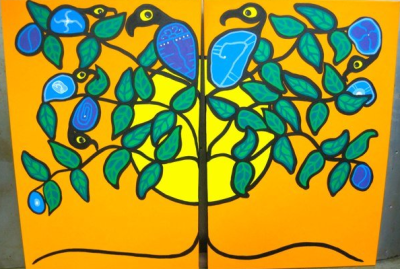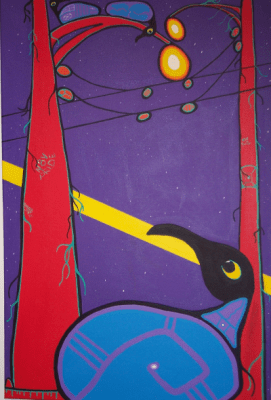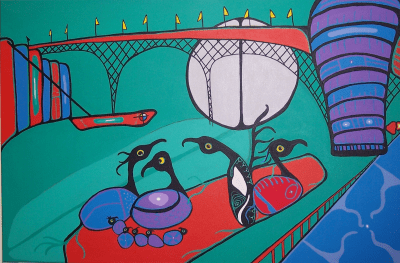The Charles Edenshaw exhibit currently at the Vancouver Art Gallery is a rare opportunity to understand not only one of Canada’s greatest artists, but also his influence. The odds are against these two hundred pieces being shown together again any time soon, but, while they are together, they allow visitors to observe the elements of Edenshaw’s style, such as his growing awareness of negative space as part of the design. Just as importantly, the exhibit shows the importance of Edenshaw in the development of not only Bill Reid, but of the entire revival of Northwest Coast Art in the last sixty-five years.
This is an outcome that Charlie Edenshaw (as he was known during his lifetime until a more formal version of his name started being used as a sign of respect) could hardly imagine. We know little of his inner thoughts, but, as he started his day’s work with a prayer, preparing to hunch for hours over his latest work, he seems to have had little concern beyond making a living for his family. In fact, he once said that he was so tired of carving that in his next life he planned to avoid it altogether. When a descendant was one of the few of his generation not to experiment with art, he was widely believed to be Edenshaw’s reincarnation.
Bill Reid never hid the debt he owed to Edenshaw. I suspect, for example, that Reid’s love of deep carving may have come from seeing Edenshaw’s argillite carving, whose cutbacks are so deep that you can often stand to one side and see daylight on the other side. If you are know Reid’s work, you cannot spend ten minutes at the Edenshaw exhibit without being haunted by a sense of familiarity. Reid was not being the least bit humble in his comments about Edenshaw; he was only stating the truth about his own development.
Two exhibits make that influence especially clear. Near the start of the exhibit is Edenshaw’s famous sketch of Dogfish Woman – done, if I remember correctly, at the request of anthropologist Franz Boas. Although acknowledging that we no longer know the story of Dogfish Woman, Reid adapted the design many times in his career. Not only that, but dozens of other First Nations artists, both Haida and non-Haida, have copied the same basic pose and design in the last half century.
The second exhibit is in a display case of bracelets near the end of the exhibit. In the middle of the case are two bracelets, one by Edenshaw and one done by Reid in 1956. They are supposed to be of two different animals, but the use of negative space and even most of the features are identical – and Edenshaw’s has the strongest sense of line. Early in his career, Reid clearly not only studied Edenshaw, but, as developing artists often do, copied him almost exactly – just as dozens have studied and copied Reid since. The next time I go to the exhibit (which is so overwhelming as to be impossible to comprehend in a single visit), I mean to watch for other evidence of the influence.
Besides an appreciation for Edenshaw’s work by itself, the exhibit is important for understanding modern Northwest Coast Art. I do not think that I am detracting anything from Reid’s reputation to notice such signs of influence; one reason that Reid is so fascinating as an artist is that he began as a copyist, and the depths of his talent only blossomed fully thirty years later, in the last two decades of his life. To see what Reid owes to Edenshaw does nothing except to offer more insight into the process of his development.
Just as importantly, as a key figure in the Northwest Coast revival, Reid himself continues to influence dozens – possibly hundreds – of artists. Considering his debt to Edenshaw, it would not be too much to say that, without Edenshaw, the revival either would have been stunted, or else not happened at all.










